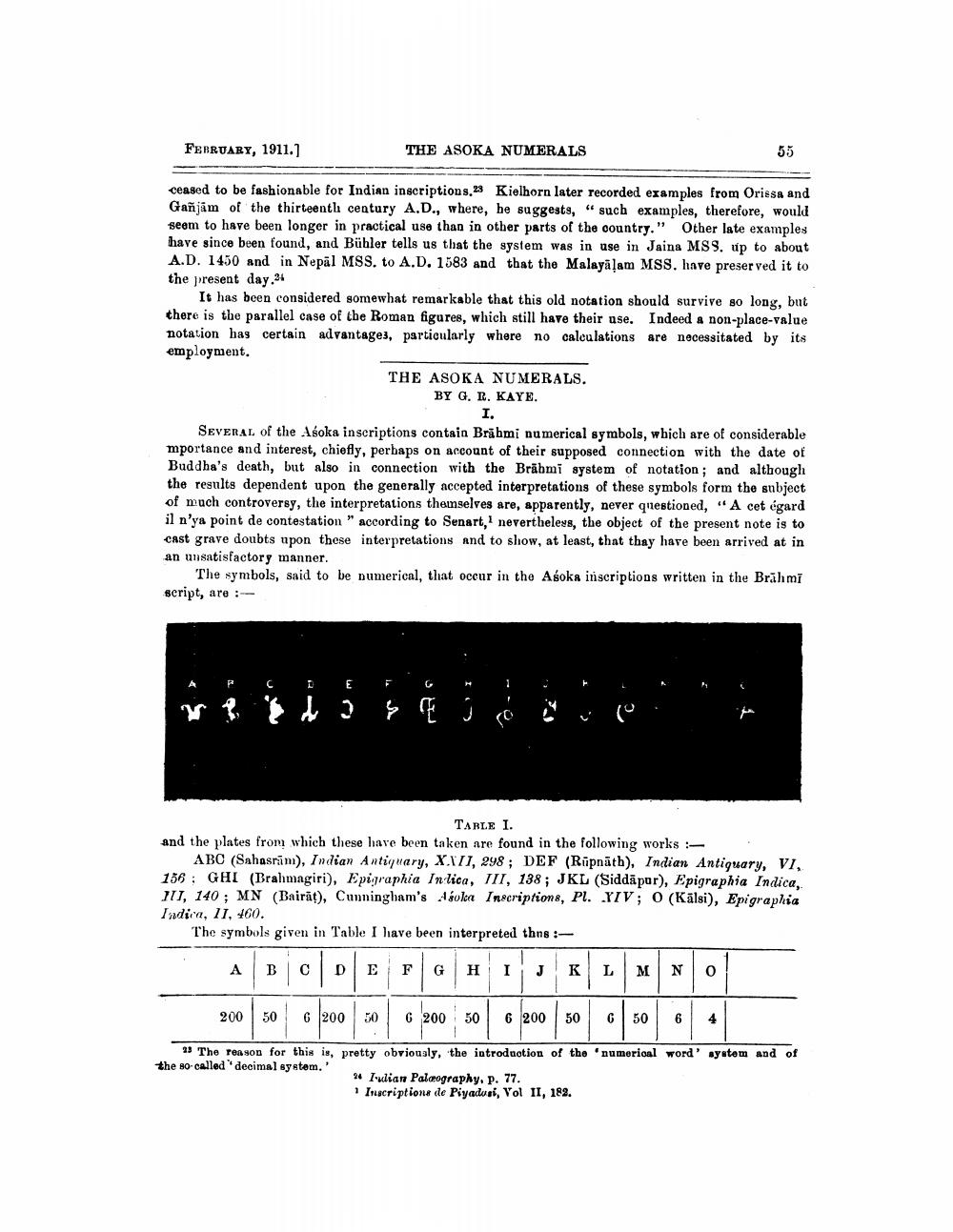________________
FERRUARY, 1911.)
THE ASOKA NUMERALS
55
ceased to be fashionable for Indian inscriptions.23 Kielhorn later recorded examples from Oriess and Gañjām of the thirteenth century A.D., where, he suggests, "such examples, therefore, would seem to have been longer in practical use than in other parts of the country." Other late examples have since been found, and Bühler tells us that the system was in use in Jaina MSS. up to about A.D. 1450 and in Nepal MSS. to A.D. 1583 and that the Malayalam MSS. have preserved it to the present day.24
It has been considered somewhat remarkable that this old notation should survive so long, but there is the parallel case of the Roman figures, which still have their use. Indeed a non-place-value notation has certain advantages, particularly where no calculations are necessitated by its employment.
THE ASOKA NUMERALS. BY G. R. KAYE.
I. SEVERAL of the Asoka inscriptions contain Brahmi numerical symbols, which are of considerable mportance and interest, chiefly, perhaps on account of their supposed connection with the date of
Buddha's death, but also in connection with the Bräbmi system of notation; and although the results dependent upon the generally accepted interpretations of these symbols form the subject of much controversy, the interpretations themselves are, apparently, never questioned, "A cet égard il n'ya point de contestation " according to Senart, I nevertheless, the object of the present note is to cast grave doubts upon these interpretations and to show, at least, that thay have been arrived at in an unsatisfactory manner.
The symbols, said to be numerical, that occur in the Asoka inscriptions written in the Brahmi script, are :
TABLE I. and the plates from which these have been taken are found in the following works :
ABC (Sahasrin), Indian Antiquary, XIII, 298; DEF (Rūpnäth), Indian Antiquary, VI, 156 ; GHI (Brahmagiri), Epigraphia In-lica, III, 138; JKL (Siddāpor), Epigraphia Indica, II, 140 ; MN (Bairāt), Cunningham's Asoka Inscriptions, Pl. XIV; O (Kālsi), Epigraphia Indira, 11, 460.
The symbols given in Table I have been interpreted thns :
B C D E F G H I J K L M N O 200 | 50 G 200 50 200 50 6 200 | 50 506
system and of
13 The reason for this is pretty obviously, the introdnotion of the numerical word the so-called decimal system.'
4 Iulian Palcography. p. 77. Inscriptions de Piyadusi, Vol II, 182.




